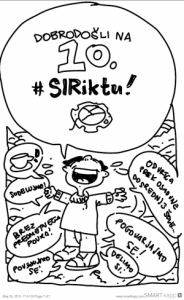Uroš Ozmec, Osnovna šola Selnica ob Dravi, Osnovna šola Lovrenc na Pohorju
Giving students an opportunity to manage the learning process is certainly a chance to boost their creativity, active thinking, problem solution and taking the responsibility for their own work and achievements. At my 8th class technology (TIT) lessons I have performed a project in which I have incorporated classroom differentiation in several different ways. The work has been performed individually, in mixed ability groups and using the teacher-centred method (8 lessons altogether). The goals I set were: – to develop handicrafts and digital competence with the use of information technology; – to improve students spatial imagination as well as develop their abstract thinking and creativity; – to get the students used to team work and to follow the rules while working in groups; – to compare the results of the groups which use different work methods at the technology (TIT) lessons. The learning process has been performed in several groups. The students have been put in different groups according to their learning abilities. Every group have had an opportunity to choose a product they would make: a salt and pepper holder or a napkin holder (both made of metal). The groups have also decided on how to design the product – by using Google Sketchup programme (3D modeling software) or by doing a drawing. All groups have then visually presented their idea and justified their decisions. The members of the other groups have marked the presentation using the point evaluation method as well as adding their comments. The idea with the most points has been chosen for production. The internal differentiation has been implemented by two different levels of instructions (instructions A – simpler and more accurate; instructions B – more demanding, including problem solving method). After the project realisation I found out that groups of stronger students had chosen the computer programme, the demanding instructions and that they had carried out all the tasks well. The students liked the fact they had been given the possibility to choose at several steps of the learning process, to regulate their task execution and to evaluate presentations in groups. The weaker students encountered some problems with the task execution yet they have later on learned how to use a 3D computer programme.
